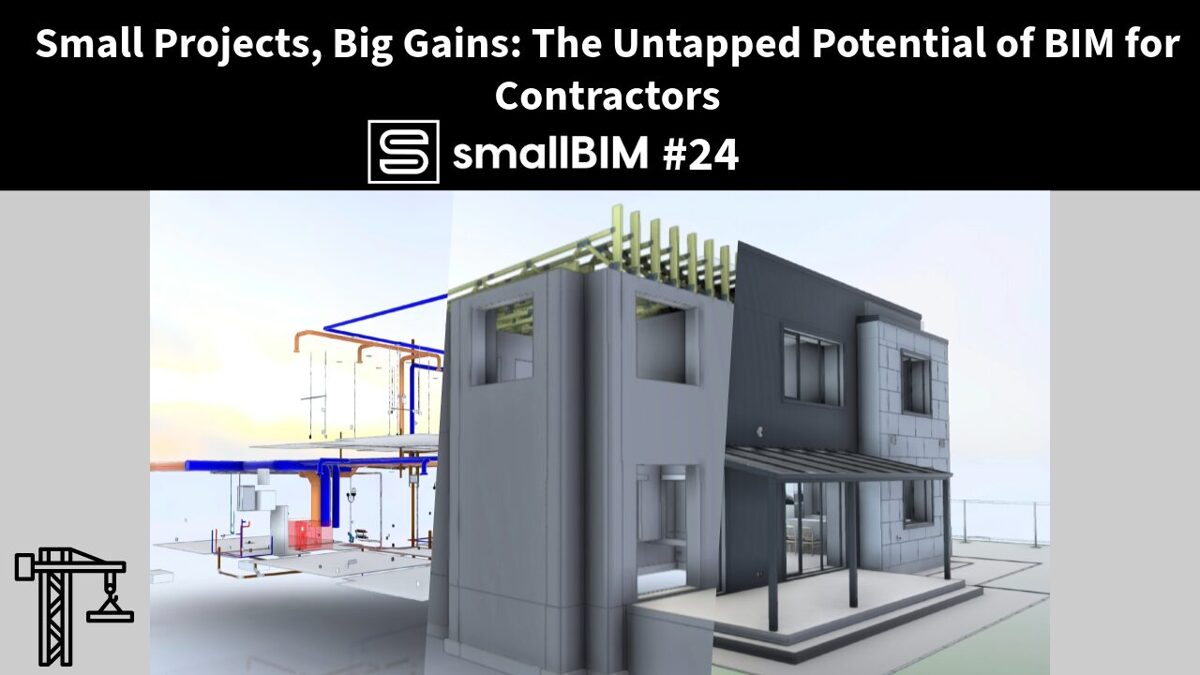Small Projects, Big Gains: The Untapped Potential of BIM for Contractors
March 19, 2024 at 7:00 am,
No comments
Being involved in the field of digital construction for more than 10 years, I still hear a lot of doubts about the benefits of Building Information Modeling (BIM), even in large-scale projects. In this article, I explore the advantages of BIM for contractors in small-scale projects. Yes, there are plenty. And there are even more benefits if the contractor is involved in the design process (e.g., design-build).

To get any benefits from BIM, such as cost savings or improved design, you need models which are the basis for different possible use cases. For the construction phase, these models preferably can come from the design phase but can also be created before the construction starts or at any time during construction.
If BIMs is Available From the Design Phase
In case models have been developed during the design phase, there are things to keep in mind:
- Not all discipline models could be available, and not all objects could be modeled—quite often only one or two disciplines are available, e.g., architecture and/or structure. And the content of the models can vary greatly—from very basic geometry to heavily populated models.
- If major discipline models are missing (like MEP), this surely points to the fact that no inter-disciplinary coordination has been done, and there is a very high likelihood of design errors.
- Models can be of varying quality, and the information to be trusted can be limited. For example, there could be different modeling errors that prevent their use for quantity take-off.
- Models can differ from drawings. In a proper BIM process, drawings are made from models, but sometimes, especially in the latter stages of the project, models are not updated, and the work continues only in a 2D environment. It is not easy to check if the drawings correspond to the models.
Even if the model quality is average, a contractor will still be able to utilize at least some of the benefits like:
- Enhanced understanding of the building design—being able to view the building in 3D allows for better planning, including risk aversion and early conflict identification.
- Even simple models can be used to double-check quantities. With only measuring tools used, it is possible to gain multiple advantages because estimating from just the 2D design can result in different mistakes. If the models are of higher quality, then automation tools can be used to extract quantities. You can read more about estimation in this blog post: "2D vs. BIM: The Battle for Accuracy in Construction Estimates and How to Save on Costs."
If There are no BIMs From the Design Phase
It is still most common that no BIMs are developed during the design phase. In this case, the only option would be to develop the models before construction to utilize at least some of the benefits. But even in this scenario, there can be plenty. By creating models from 2D drawings, it is possible to:
- Find errors in drawings—misalignments between different disciplines, missing information, and so on.
- Compare quantities between modeled objects and BOQs made from 2D to find any inconsistencies.
- Plan construction works by identifying project specifics. In my everyday work, I call the process of creating models before construction pre-construction validation. And in both small and big buildings, it can save time and money significantly.
Conclusion
There are many different BIM use cases for contractors, but not many are worth the effort in small-scale construction. For example, construction simulation (aka 4D) has huge potential benefits in infrastructure or large civil construction projects, but in small-scale projects, proper scheduling could be enough. Read more about easy yet powerful scheduling principles in my posts: "Scheduling to Stay in Control of Your Projects Without Excel. Part 1 and Part 2."
But all in all, there are significant benefits for BIM usage for contractors in both situations—where models have been developed during design and when not. The key to success lies in the deeper understanding of BIM and the skills to utilize the information, which can be acquired quite fast.
